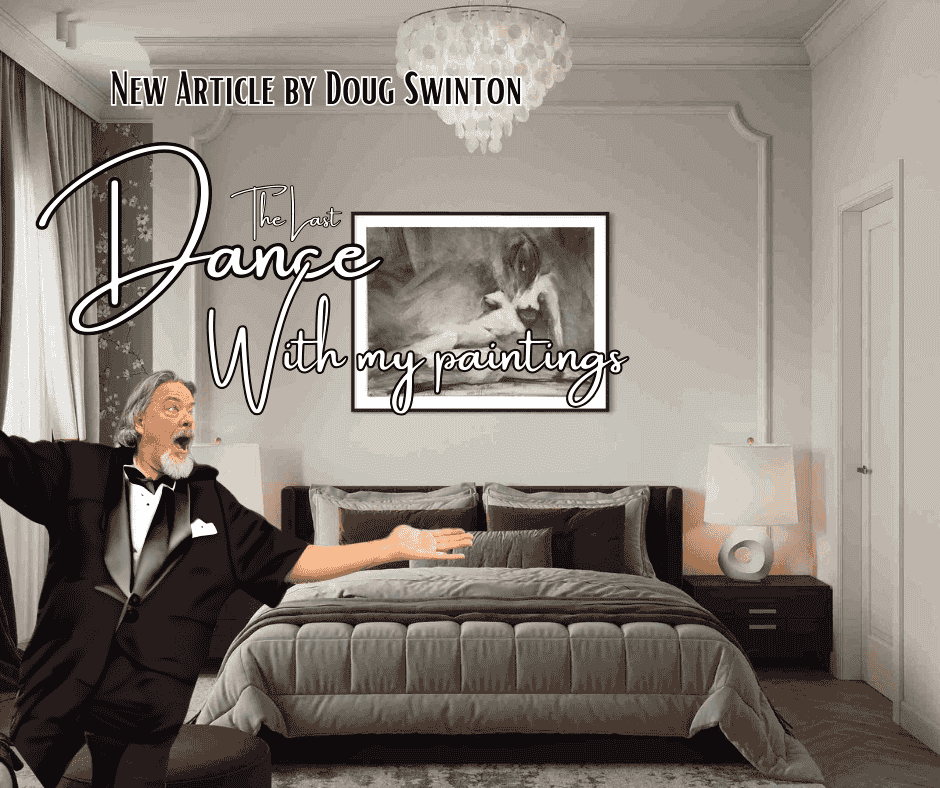10 Things I learned about painting fall colours from my trip to Alaska
- Doug Swinton

- Jan 10, 2016
- 3 min read
Updated: Nov 18, 2020
Autumn Painting Tips from a Northern Excursion

In the fall of 2015 I drove to Alaska and painted along the way. This expedition was my life long dream. As far as painting is concerned, the colours there are slightly different and more intense. Below are my field painting notes from this magnificent journey.
Cadmium Yellow Deep. This colour is a MUST. The Cad Yellow Light or Lemon Yellow have a large green component to them. Most Cad Yellow Mediums also have a green undertone and tend to show this green when mixed, thus having a cooling and dulling effect. Cad Yellow Deep has a larger orange component, and stays warm.
Try not to see the abundance of leaves upon the tree but the general shape of the tree itself. Paint big shapes to start.
There is far more purple in fall colours that you think. Once you have secured the preponderance of warm colours, you need to add a little cool to the mix. This tells the viewer how warm the warms are. Quinacridone Rose and Ultramarine Blue lightened will give you a nice soft purple. With the addition of Yellow Ochre you can grey this down to a perfect quiet lavender that will sing amongst the golden yellows.
Details for shrubs and trees should be placed on the edges between temperature or value breaks. Remember - large shapes advance and small shapes recede.
Cadmium Orange and Quinacridone Rose make a great red. This red will lean from the cad red light side (orange tendency) to the deep warm red, almost purple side. Remember - warm tones advance and cool tones recede.
Pre-toning your canvas with a warm colour will help with filling in the blanks and allow you to paint simpler shapes and you won’t have to fill the canvas with as much detail.
Use a brush one size bigger than you are comfortable with. Using a bigger brush will help aid in the elimination of details too early in the painting and keep things looking fresh.
It is easier to cool a warm colour than to warm a cool colour. Cools tend to be dominant, so use them after the warms have been established.
Adding white to yellow doesn’t make it brighter - in fact, it makes it duller. Colours are only as bright as they can be when used straight from the tube. Adding white to colours cools and dulls them. This is even more true if you are using acrylics. If you want your yellows to be bright, use them straight out of the tube. One other way to make your yellows seem brighter is to darken or deepen the blue of your sky. Carl Rungius used this trick to make his snow on the mountains “pop”. By making the sky darker, the whites in his snow appear to be brighter.
When you are mixing colours do it in the right order so you don’t end up mixing twice. Once you have identified the colour you want (red, yellow, orange, blue, purple, or green), mix it, then adjust for value (most often lighten) and then adjust for chroma (usually by adding the compliment). By avoiding adjustment to the chroma before the value you save a mixing step by not having mixed twice.
Below are some field paintings of the fall colours I did while on my northern excursion.
Your friend in art,
Doug.








AV在线看 AV在线看;
自拍流出 自拍流出;
国产视频 国产视频;
日本无码 日本无码;
动漫肉番 动漫肉番;
吃瓜专区 吃瓜专区;
SM调教 SM调教;
ASMR ASMR;
国产探花 国产探花;
强奸乱伦 强奸乱伦;
AV在线看 AV在线看;
自拍流出 自拍流出;
国产视频 国产视频;
日本无码 日本无码;
动漫肉番 动漫肉番;
吃瓜专区 吃瓜专区;
SM调教 SM调教;
ASMR ASMR;
国产探花 国产探花;
强奸乱伦 强奸乱伦;
代发外链 提权重点击找我;
谷歌蜘蛛池 谷歌蜘蛛池;
Fortune Tiger…
Fortune Tiger…
谷歌权重提升/ 谷歌权重提升;
谷歌seo 谷歌seo;
谷歌霸屏 谷歌霸屏
蜘蛛池 蜘蛛池
谷歌快排 谷歌快排
Google外链 Google外链
谷歌留痕 谷歌留痕
Gái Gọi…
Gái Gọi…
Dịch Vụ…
谷歌霸屏 谷歌霸屏
负面删除 负面删除
币圈推广 币圈推广
Google权重提升 Google权重提升
Google外链 Google外链
google留痕 google留痕
代发外链 提权重点击找我;
谷歌蜘蛛池 谷歌蜘蛛池;
Fortune Tiger…
Fortune Tiger…
谷歌权重提升/ 谷歌权重提升;
谷歌seo 谷歌seo;
谷歌霸屏 谷歌霸屏
蜘蛛池 蜘蛛池
谷歌快排 谷歌快排
Google外链 Google外链
谷歌留痕 谷歌留痕
Gái Gọi…
Gái Gọi…
Dịch Vụ…
谷歌霸屏 谷歌霸屏
负面删除 负面删除
币圈推广 币圈推广
Google权重提升 Google权重提升
Google外链 Google外链
google留痕 google留痕
代发外链 提权重点击找我;
游戏推广 游戏推广;
Fortune Tiger Fortune Tiger;
Fortune Tiger Slots Fortune…
谷歌马甲包/ 谷歌马甲包;
谷歌霸屏 谷歌霸屏;
מכונות ETPU מכונות ETPU;
;ماكينات اي تي بي…
آلات إي بي بي…
ETPU maşınları ETPU maşınları;
ETPUマシン ETPUマシン;
ETPU 기계 ETPU 기계;